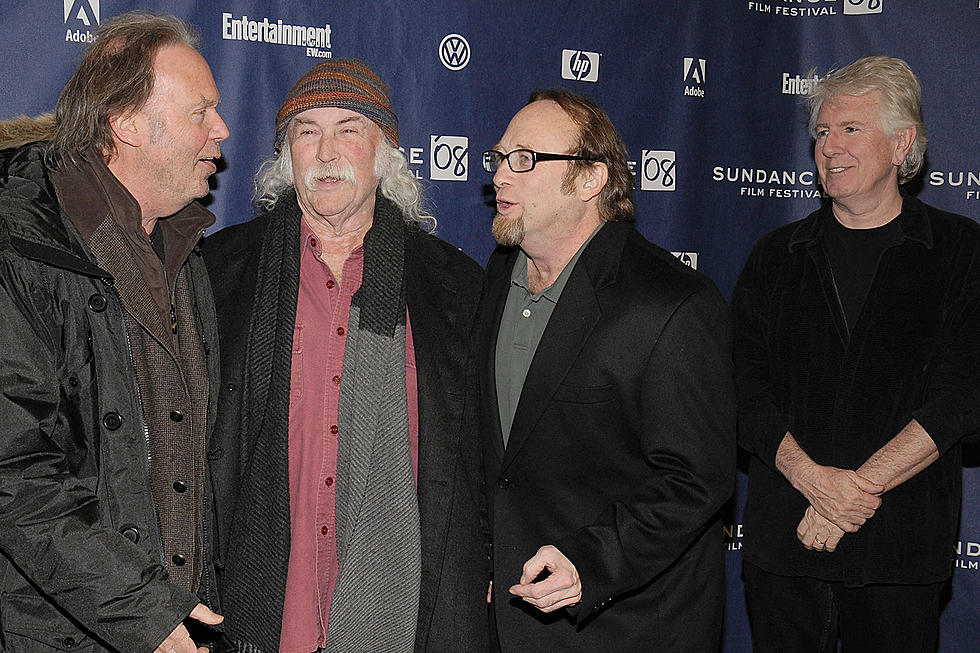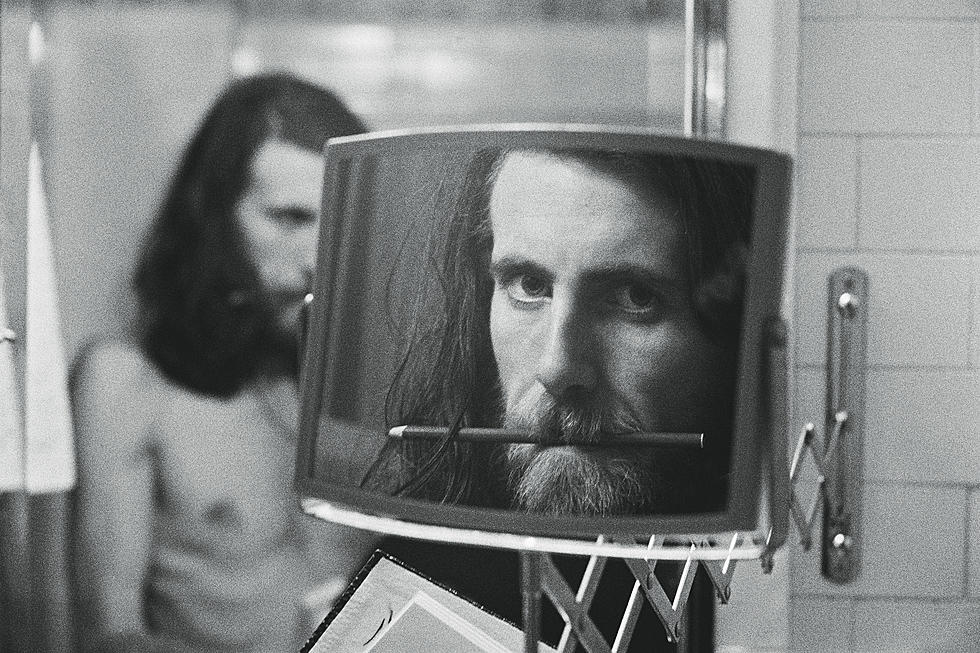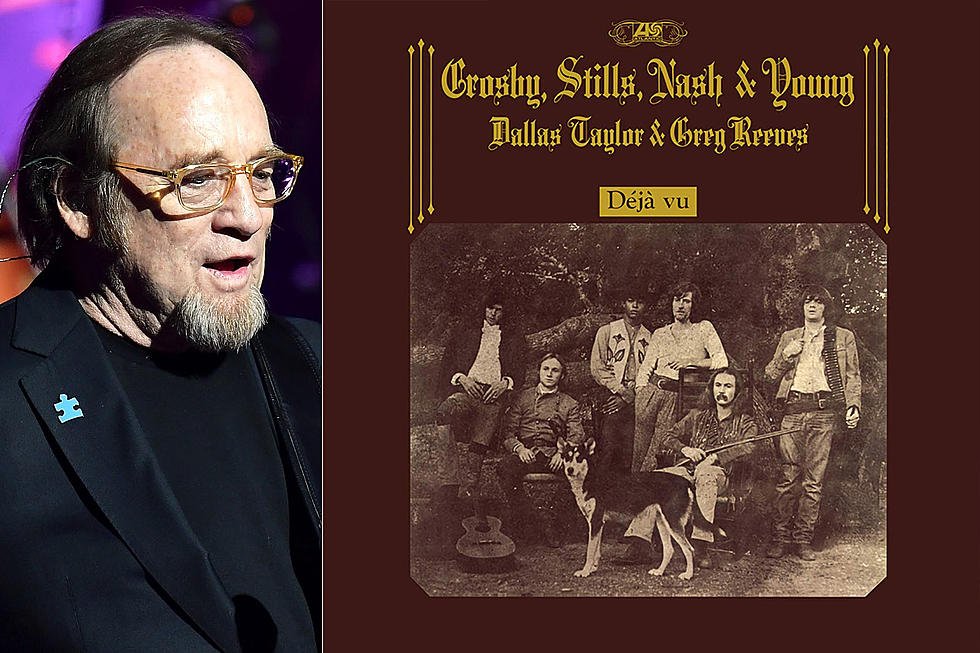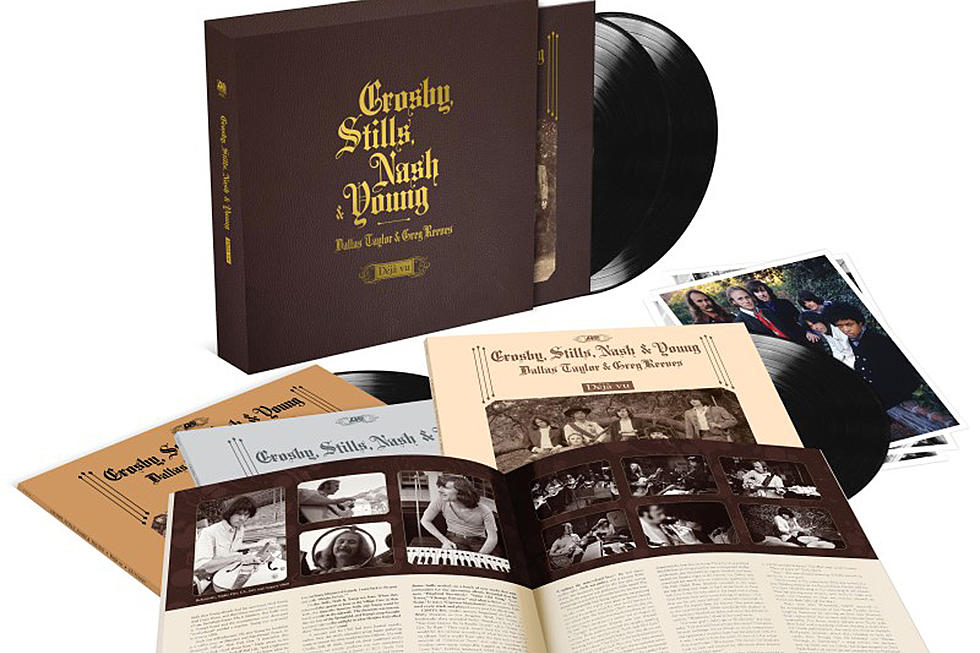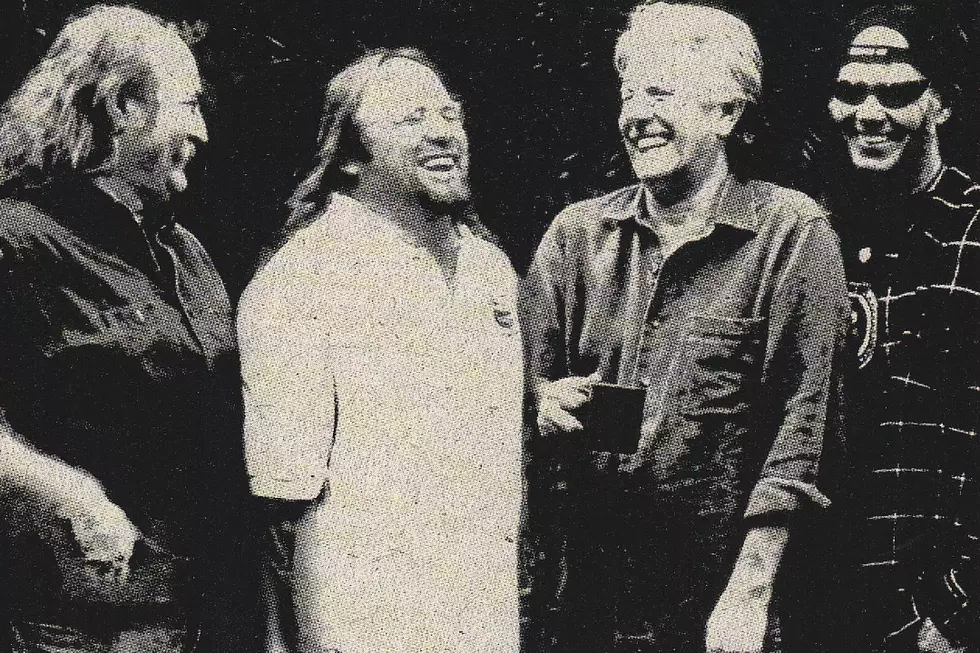
How Crosby Stills Nash and Young Tried to Make It Work Again
Crosby Stills & Nash have remained consistently active in the studio and on the road for decades, and so has Neil Young – but Crosby Stills Nash & Young have only managed to record as a quartet sporadically over the years, so when the on-again, off-again foursome reconvened for on Oct. 26, 1999's Looking Forward LP, it was a big deal.
The rather unlikely seeming reunion broke an 11-year studio hiatus for CSNY – a lifetime in rock 'n' roll, but still a great deal shorter than the 18-year gap between 1970's classic Deja Vu and their next collection of new material, 1988's American Dream. That LP was the result of an agreement made between David Crosby and Neil Young when Young promised Crosby he'd agree to a reunion if Crosby managed to put his substance abuse issues behind him, but while the result was a platinum record, neither critics nor the group seemed to think much of the music.
"It only lasted a while, then it was over," Young shrugged years later. "Coming back together wasn’t as easy as I thought it would be."
It came as something of a surprise, then, when Young rejoined the group during the sessions for what became Looking Forward. As he later pointed out, the trio's subpar commercial performance during the '90s – a span that found them releasing the studio sets Live It Up and After the Storm to little fanfare – had left CSN without a record deal and footing the bill for their next LP. "I really don't know," Young confessed when the Guardian asked him what led to the reunion. "Everybody was ready for it. Crosby, Stills and Nash were in the studio, they'd taken out a loan to finance the record. They'd dumped their record company and they were making the record on their own, so I figured, 'Well, hey! If they're doing that, it shows they're really into it.'"
That lackadaisical recollection fits the laid-back spirit of Looking Forward in general, which is overall of a piece with the gentle, harmony-fueled rock that makes up the bulk of the CSN/CSNY catalog.
Recorded over an extended span with a variety of producers that included longtime confederates Joe Vitale and Ben Keith, the album found the quartet enlisting an impressive array of studio ringers, including such legendary players as Spooner Oldham, Jim Keltner, 'Hutch' Hutchinson and 'Duck' Dunn.
Those showy names – and the long gap between CSNY records – may have led some to believe that Looking Forward would have a different feel or flavor. That turned out not to be the case, but the vibe behind the scenes really had changed: Graham Nash said the recording process was "joyful," and credited Young with encouraging them to record their harmonies live in the studio rather than overdubbing them. "Neil always prefers earlier takes of songs," he continued. "He believes, as we all do, that after six or seven performances of any song you begin to perform it rather than feel it. We would rather have 'feeling' than perfection."
Sweet as it was to hear those four voices united behind some new material, few would have argued that Looking Forward was perfect. Engineer Stephen Barncard echoed the sentiments of many critics when he conceded that it was "probably the sappiest record they've ever made," but he argued that it also "has the elements of what we'd been trying to get them to do for years, which is the social compression, hanging out together, kind of sitting around the campfire singing songs. And I think they tried to do that to some extent."
Listen to Crosby Stills Nash & Young's 'Looking Forward'
Those efforts paid off to some extent. The reviews for Looking Forward were relatively lukewarm, but sales proved CSNY's audience was still eager for new material; unlike CSN's previous two releases, it made a sizable dent in the charts, peaking at No. 26 and presaging a highly anticipated tour that they naturally dubbed CSNY2K.
"We still have it," Nash insisted. "We still mean it. It’s not for the money. It never was. It’s for the music." Added Crosby, "They used to say we were speaking for our generation, and I think in a sense that’s still true. You hear a lot of music these days about rage and frustration and anger, but not much about hope and love and forward motion. That’s what we continue to stand up for."
True to form, Young offered a slightly less enthusiastic opinion when asked about the quartet's enduring appeal, murmuring, "CSNY reminds people of a certain feeling. Our audience want to see it alive again because somehow it verifies the feeling that they’re alive too."
Young's traditional reticence regarding the group was obviously well-known at this point, but even as he maintained an unwillingness to abandon his consistently busy solo career, he stood behind the results of the reunion.
"We'd stay focused on each song, and we'd keep working on it until it was finished," he recalled when describing the sessions to the Guardian. "We didn't let any record company guys in, we didn't tell anybody what we were doing, and we told people to leave if they did show up. It worked well for us because we had no pressure. We never even talked about being CSNY or even doing an album. We waited until we were finished and we knew what it was."
What it was, ultimately, was temporary. Just as they always had, Crosby Stills Nash & Young joined together for only a short while, and although they've reunited for subsequent tours – including 2006's Freedom of Speech jaunt, which found them backing Young on the road behind his Living With War LP – Looking Forward remains not only the most recent CSNY album, but the most recent CSN studio project to see release.
As of late 2014, it appears that the fractious foursome are done for good – Young has alluded to a disagreement between himself and Crosby that he believes will keep them apart permanently – history has proven that it's hard to say "never" where Crosby Stills Nash & Young are concerned. "Every once in a while, we fly in formation, and that's what we're doing now," Young told Uncut. "It's like we return to the mothership occasionally, but spend a lot of time exploring. We have roots together that are hard to deny. It's just right here in front of us."
Top 100 '70s Rock Albums
The Best Crosby Stills Nash and Young Fight Stories
More From Ultimate Classic Rock
